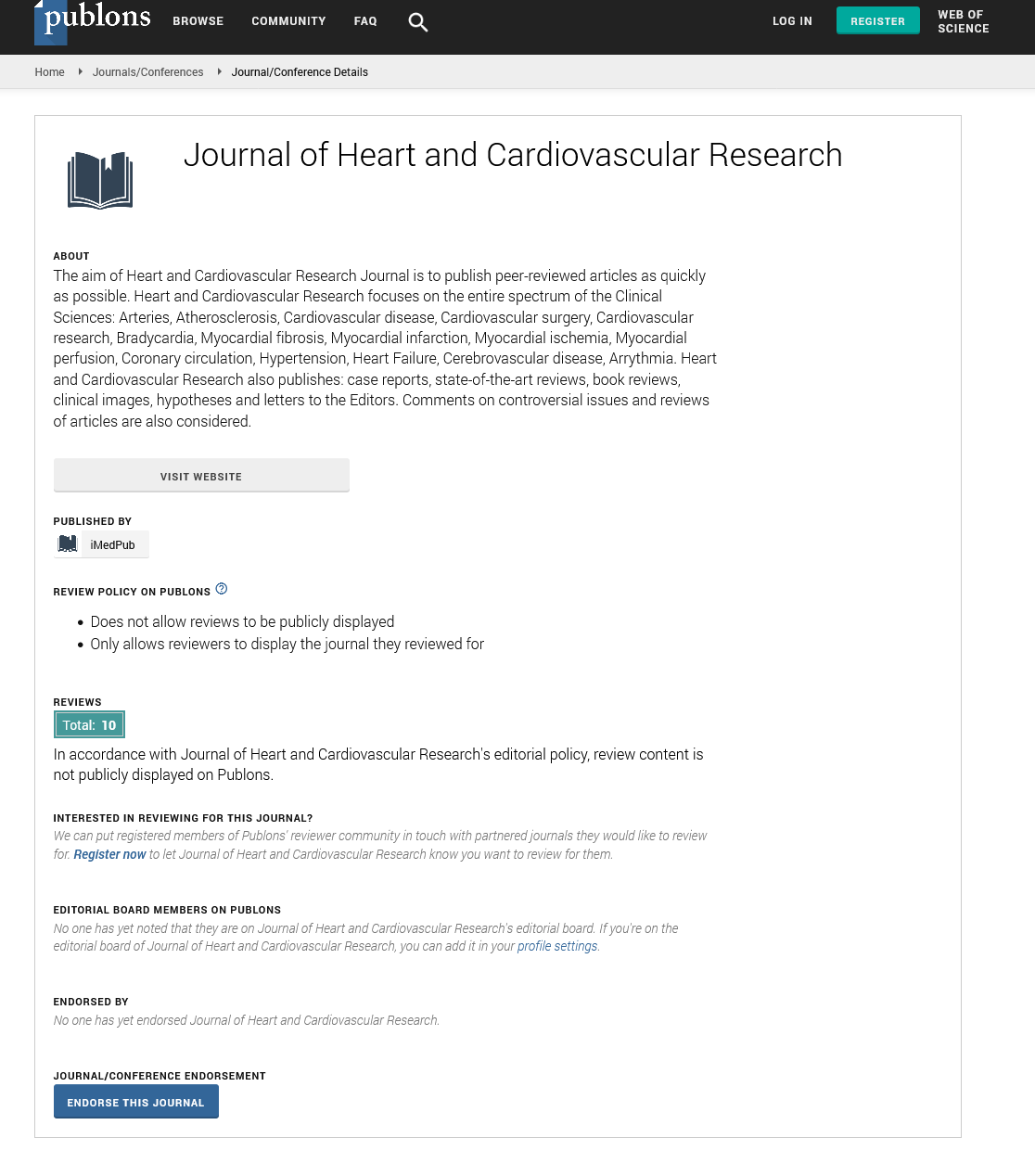ISSN : ISSN: 2576-1455
Journal of Heart and Cardiovascular Research
Abstract
Correlations between Pulse Pressure and Anthropometric Indices of Obesity: Cross-sectional Study in a Congolese Southwest Port City- Kianu Phanzu Bernard- Democratic Republic of Congo
Introduction:
Hypertension (HTN) and obesity often coexist. When hypertensive subjects are compared with normotensive, one of the main differences is the awesome increase of the prevalence of obesity among hypertensive . Furthermore, weight gain seems to be one of the main determinants of blood pressure increase with age . HTN and obesity share many socio-ecological and epidemiological similarities. First, they are diseases of civilization, corollaries of profound changes that accompanied the 45,000 years of evolution from Homo sapiens sapiens, to which physical activity was the pledge of survival , to the today human who uses more neurons than muscles to live and survive, and therefore, has reduced physical activity and increased energy intake. Second, the relevance of both hypertension and obesity, as important public health challenges, is increasing worldwide. Third, there are ethnic disparities in the prevalence and cardiovascular health impact of both. Thus, for example, HTN is experiencing a more dramatic growth in blacks, affecting younger people, with poorer blood pressure. Obesity also is more prevalent in Blacks than in Caucasians, and would be associated with a higher cardiovascular risk in Blacks.
Objectives:
This study is part of the MACRIS study. Data collection has been described elsewhere [40]. Pulse pressure was defined as the difference between SBP and DBP. Mean blood pressure was defined as the sum of diastolic blood pressure and the third of the pulse pressure. Waist Circumference (WC) and The Waist- Hip Ratio (WHR) were considered as parameters of abdominal obesity, while BMI was considered for general obesity. General obesity was defined as a body mass index (BMI) greater than or equal to 30 kg/m², BMI is the ratio of weight to height squared. Abdominal obesity (AO) has been defined by a waist circumference greater than or equal to 94 cm for men and greater than or equal to 80 cm for women.
Results:
It was a young population (mean age 37 years), with only a quarter of the population over 55 years (97/397). The population was predominantly female. (Sex ratio: 1.7). Abdominal obesity (53.2%) and hypertension (40.8%) were the most prevalent cardiovascular risk factors in this population. The high rate of participants with abdominal obesity (53.2%) contrasts with the low overall obesity (14.9%). Only a small proportion of the population (4%) was sedentary.
Conclusions: Our study shown that waist circumferences were the only markers of obesity significantly associated with the PP. However, the strength of these associations was significantly different according to age, sedentary and hypertension status.
Author(s): Kianu Phanzu Bernard1, Mpembele Mabaka Evelyne1, Kianu Phanzu Bernard1, Kintoki Vita Eleuthère1, Mbutiwi Ikwa Ndol Fiston2, M’buyamba Kabangu Jean-Réné1 and Longo-Mbenza Benjamin3
Abstract | PDF
Share This Article
Google Scholar citation report
Citations : 34
Journal of Heart and Cardiovascular Research received 34 citations as per Google Scholar report
Journal of Heart and Cardiovascular Research peer review process verified at publons
Abstracted/Indexed in
- Google Scholar
- Sherpa Romeo
- China National Knowledge Infrastructure (CNKI)
- Publons
Open Access Journals
- Aquaculture & Veterinary Science
- Chemistry & Chemical Sciences
- Clinical Sciences
- Engineering
- General Science
- Genetics & Molecular Biology
- Health Care & Nursing
- Immunology & Microbiology
- Materials Science
- Mathematics & Physics
- Medical Sciences
- Neurology & Psychiatry
- Oncology & Cancer Science
- Pharmaceutical Sciences
